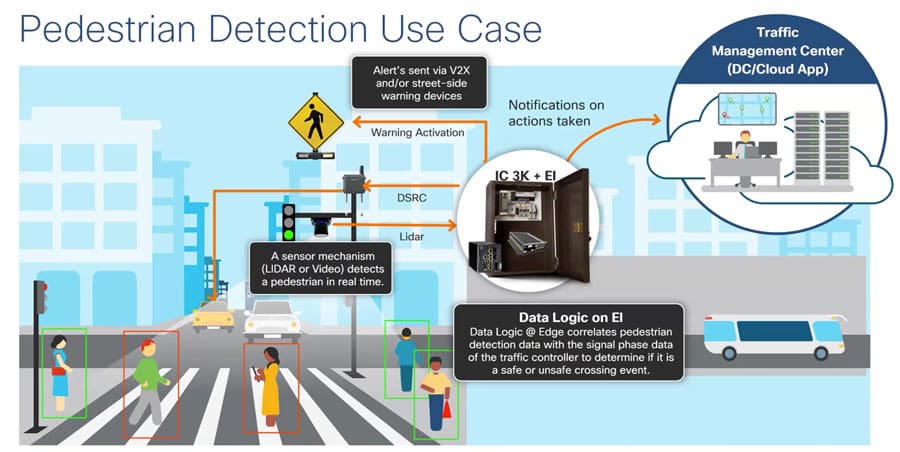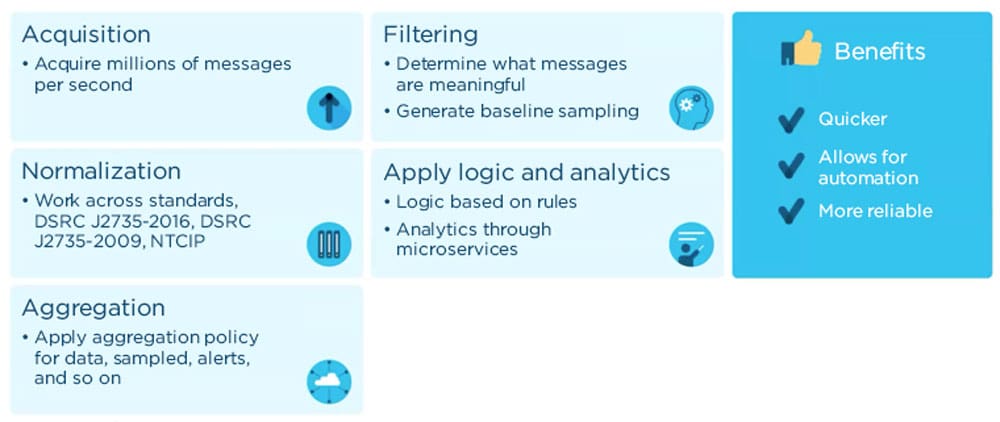Twitter Feed
Interoperability: A Much Needed Cloud Computing Focus
Cloud computing transitions information technology (IT) from being “systems of physically integrated hardware and software” to “systems of virtually integrated services”. This transition makes interoperability the difference between the success…
Managing IaaS and DBaaS Clouds with Oracle Released
Over the holidays I actually spent some time reviewing the newly released “Managing IaaS and DBaaS Clouds with Oracle Enterprise Manager Cloud Control 12c“. This book is a step-by-step tutorial…
Veterans 360: Helping Young Combat Veterans Succeed
Refusing to accept the 30 percent unemployment rate for California veterans between the ages of 18 and 24, Veterans 360 (V360) offers recently-separated combat veterans the opportunity for a solid…
Veterans 360 Paves the Way with Cloud Certification Training
In keeping with their mission to support young combat veterans’ transition into civilian life, Veterans 360 plans to launch a free Cloud Technology Certification training program. Vets360-Cloud will give veterans…
DBT-Data is a Force to be Reckoned With
DBT-Data further established itself in the data storage industry as a formidable force with the $35 million dollar purchase of the state of the art Cyber Integration Center on 1175…
2014 Federal Intelligence Summit – Washington, DC
DBT Data and Potomac Officers Club are excited to announce that Al Tarasiuk, CIO of the Office of the Director of National Intelligence (ODNI), will be part of an ICITE…
3rd Annual World Congress of Cloud Computing 2014
Today I am proud and honored to announce that I will be participating in this year’s 3rd Annual World Congress of Cloud Computing 2014! Highlighting the theme of “Chinese Dream…
NRRC Video Series – Video 8 : Raytheon R3 Decision Support Tool and Advanced Tactical System
In September, the NCOIC delivered the Geospatial Community Cloud (GCC) demonstration. Sponsored by the National Geospatial-Intelligence Agency, this demonstration showed how an interoperable, hybrid-cloud operating environment can be quickly enabled…
NRRC Video Series – Video 7 : Dave Boulos Demonstrates Bring-Your-Own-Device (BYOD) Management
In September, the NCOIC delivered the Geospatial Community Cloud (GCC) demonstration. Sponsored by the National Geospatial-Intelligence Agency, this demonstration showed how an interoperable, hybrid-cloud operating environment can be quickly enabled…
Just Pinched Myself ! Part of a “GovCloud Dream Team” !!
DBT-DATA provides reliable, flexible, and cost-effective data center solutions to federal, enterprise, and internet customers. With premier facilities in Ashburn, Virginia and the Cyber Integration Center in Harrisonburg, Virginia, they…
By Kevin L. Jackson
The complexities of citywide traffic are pushing the limits of existing transportation management systems. Outdated infrastructure is based on proprietary, single-purpose subsystems, making it costly to acquire, operate, and maintain. And current roadways are simply not prepared for the future of autonomous vehicles.
Enter the SPaT Challenge, an initiative encouraging cities and states to invest in new traffic management technologies to reduce roadway incidents, improve safety, and help manage autonomous vehicles. A means to this end requires that deployments use standard messaging and communications protocols.
Florida is one state that has stepped up to the challenge. Florida DOT and Orange County teamed with Cisco to develop a Pedestrian Collision Avoidance System, which supports the initiative requirements, and much more. Currently the system is successfully deployed at busy roadway intersections where vehicular congestion and pedestrian safety have been significant issues.
The system also updates digital roadway signage and provides weather condition warnings. Critical information can be sent to first responders if an incident does occur. The overall design reduces operational costs by incorporating advanced technologies into the existing roadway infrastructure. It also preserves compatibility with automated lights, gates, and other traditional roadside devices.
The Orange County SPaT deployment is based on the Cisco Roadway solution—designed to secure and connect intelligent transportation systems. It enables vehicles, roadways, travelers, and traffic management centers to all communicate with one another in real time. Cities and transportation agencies can simplify operations without having to replace existing infrastructure.
Roadside Real-Time Analytics
The heart of the Cisco solution is its Industrial Compute 3000, a high-performance edge computer deployed in the intersection traffic cabinet. Powered by Intel® processors and the Cisco Kinetic application platform, the system bridges the gap between legacy and modern traffic control devices (Figure 1).

“The data we’re encompassing is everything from traffic lights, controller, weather, to connected vehicles,†said Mark Knellinger, Cisco Transportation Architect. “Think of it as fusing these things together into a new application. This integration helps our customers deliver the next generation of infrastructure-to-vehicle communications solutions.â€
A unique aspect of the solution is how it advertises object positions as fast as if they were physically connected devices. With the use of LiDAR (Light Detection and Ranging) and video, pedestrian movement is followed across the roadway intersection. A “personal safety message†is created and delivered 10 times a second for every pedestrian that is tracked.
This allows a vehicle to understand where pedestrians are without its sensors having to pick them up. If, for example, a vehicle is too far away from the intersection, or blocked by other vehicles, it still understands the position of those pedestrians.
“We’re delivering pedestrian protection by interfacing with traffic controllers and legacy devices like lights and signs,†said Knellinger. “We’re also delivering on the next generation of connectivity by giving autonomous vehicles data that they can’t get on their own.â€
But this real-time analytics can’t be done without high-performance computing at the edge. For example, LiDAR systems alone draw 300 megabytes per second, and if that data is not processed in the traffic cabinet, the system cannot respond in real time. In fact, Cisco meets the national criteria for safety applications, which require the time from detection to notification to happen in 20 milliseconds or less.
The Building Blocks of Real-Time Analytics
The Kinetic software can acquire, filter, and normalize data from hundreds of protocols and different interface types. It provides theability to run applications all the way at the edge, regardless of the sensors deployed (Figure 2).

A significant challenge for intelligent roadway systems is that almost every IoT sensor puts out information in a different format, leading to fractured data. The Kinetic software normalizes that data on acquisition, which means a customer’s model is enforced at the edge of the network.
“We can distribute one edge application like pedestrian detection by normalizing video analytics for the pedestrian location, or different LiDAR system types, regardless of vendor,†said Knellinger. “And this is where Intel technology comes in—solving the unique requirements of high data velocity.â€
Another challenging data management function is the acquisition of millions of messages every second. Filtering policies allow for tailored data models that fit application needs. Knellinger cites one example: “About 80 percent of connected vehicle data received by a roadway infrastructure operator is duplicate packets. We deduplicate and filter those packets at the edge with our software.â€
The IoT of Connected Vehicles
The Connected Roadways solution goes well beyond addressing the challenges of pedestrian safety. It can help transportation organizations set the stage for a wide range of improvements—from reducing roadway congestion to improving air quality regulation compliance. And looking forward to even more advanced applications, it establishes a foundation for the arrival of connected, autonomous vehicles.
Originally published by insight.tech on February 18, 2020. https://www.insight.tech/content/real-time-analytics-power-the-roadway-of-the-future
Sponsored by Intel Corporation
Cloud Computing
- CPUcoin Expands CPU/GPU Power Sharing with Cudo Ventures Enterprise Network Partnership
- CPUcoin Expands CPU/GPU Power Sharing with Cudo Ventures Enterprise Network Partnership
- Route1 Announces Q2 2019 Financial Results
- CPUcoin Expands CPU/GPU Power Sharing with Cudo Ventures Enterprise Network Partnership
- ChannelAdvisor to Present at the D.A. Davidson 18th Annual Technology Conference
Cybersecurity
- Route1 Announces Q2 2019 Financial Results
- FIRST US BANCSHARES, INC. DECLARES CASH DIVIDEND
- Business Continuity Management Planning Solution Market is Expected to Grow ~ US$ 1.6 Bn by the end of 2029 - PMR
- Atos delivers Quantum-Learning-as-a-Service to Xofia to enable artificial intelligence solutions
- New Ares IoT Botnet discovered on Android OS based Set-Top Boxes
